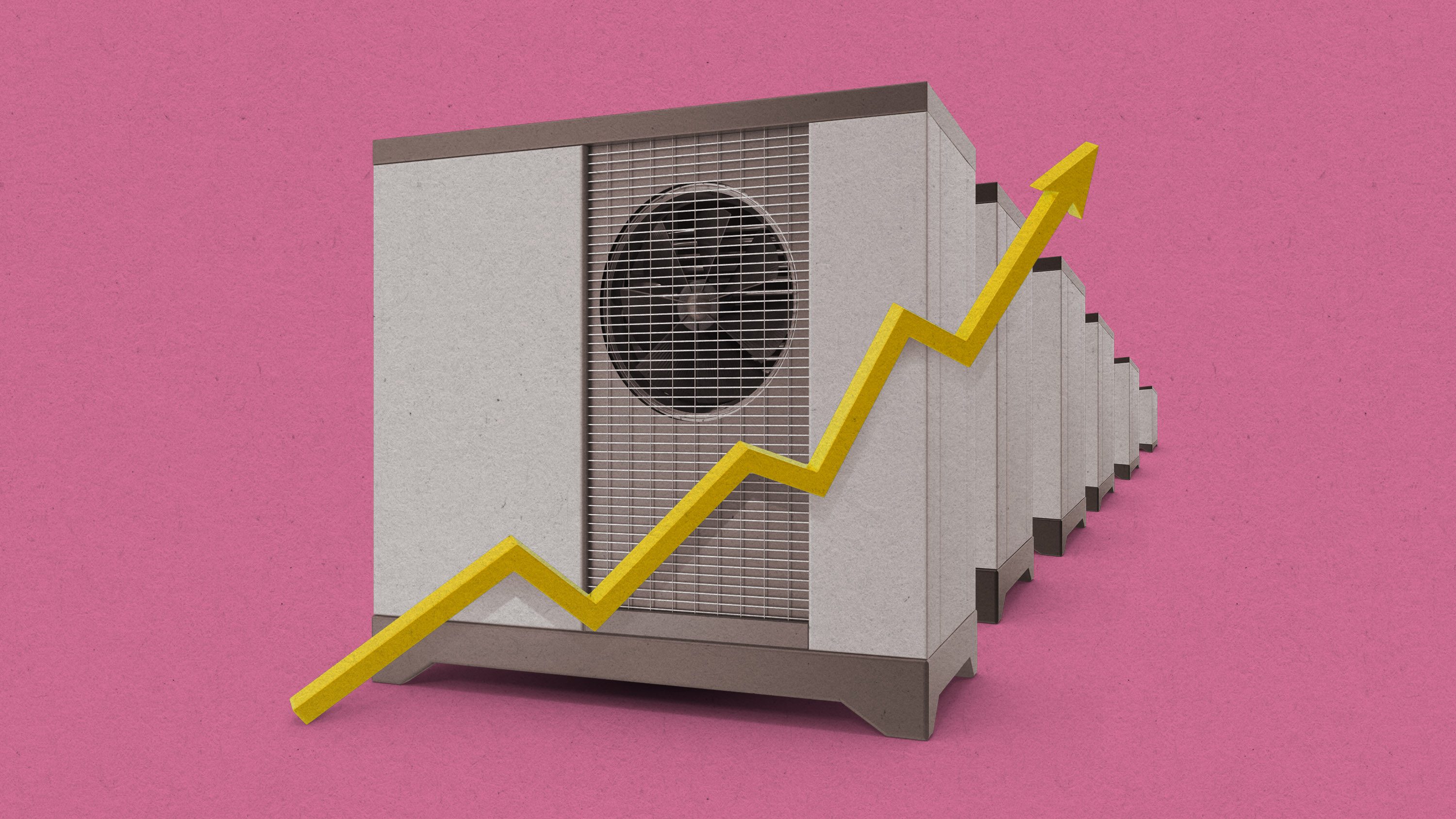How to build a thermal battery
This article is from The Spark, MIT Technology Review’s weekly climate newsletter. To receive it in your inbox every Wednesday, sign up here.
The votes have been tallied, and the results are in. The winner of the 11th Breakthrough Technology, 2024 edition, is … drumroll please … thermal batteries!
While the editors of MIT Technology Review choose the annual list of 10 Breakthrough Technologies, in 2022 we started having readers weigh in on an 11th technology. And I don’t mean to flatter you, but I think you picked a fascinating one this year.
Thermal energy storage is a convenient way to stockpile energy for later. This could be crucial in connecting cheap but inconsistent renewable energy with industrial facilities, which often require a constant supply of heat.
I wrote about why this technology is having a moment, and where it might wind up being used, in a story published Monday. For the newsletter this week, let’s take a deeper look at the different kinds of thermal batteries out there, because there’s a wide world of possibilities.
Step 1: Choose your energy source
In the journey to build a thermal battery, the crucial first step is to choose where your heat comes from. Most of the companies I’ve come across are building some sort of power-to-heat system, meaning electricity goes in and heat comes out. Heat often gets generated by running a current through a resistive material in a process similar to what happens when you turn on a toaster.
Some projects may take electricity directly from sources like wind turbines or solar panels that aren’t hooked up to the grid. That could reduce energy costs, since you don’t have to pay surcharges built into grid electricity rates, explains Jeffrey Rissman, senior director of industry at Energy Innovation, a policy and research firm specializing in energy and climate.
Otherwise, thermal batteries can be hooked up to the grid directly. These systems could allow a facility to charge up when electricity prices are low or when there’s a lot of renewable energy on the grid.
Some thermal storage systems are soaking up waste heat rather than relying on electricity. Brenmiller Energy, for example, is building thermal batteries that can be charged up with heat or electricity, depending on the customer’s needs.
Depending on the heat source, systems using waste heat may not be able to reach temperatures as high as their electricity-powered counterparts, but they could help increase the efficiency of facilities that would otherwise waste that energy. There’s especially high potential for high-temperature processes, like cement and steel production.
Step 2: Choose your storage material
Next up: pick out a heat storage medium. These materials should probably be inexpensive and able to reach and withstand high temperatures.
Bricks and carbon blocks are popular choices, as they can be packed together and, depending on the material, reach temperatures well over 1,000 °C (1,800 °F). Rondo Energy, Antora Energy, and Electrified Thermal Solutions are among the companies using blocks and bricks to store heat at these high temperatures.
Crushed-up rocks are another option, and the storage medium of choice for Brenmiller Energy. Caldera is using a mixture of aluminum and crushed rock.
Molten materials can offer even more options for delivering thermal energy later, since they can be pumped around (though this can also add more complexity to the system). Malta is building thermal storage systems that use molten salt, and companies like Fourth Power are using systems that rely in part on molten metals.
Step 3: Choose your delivery method
Last, and perhaps most important, is deciding how to get energy back out of your storage system. Generally, thermal storage systems can deliver heat, use it to generate electricity, or go with some combination of the two.
Delivering heat is the most straightforward option. Typically, air or another gas gets blown over the hot thermal storage material, and that heated gas can be used to warm up equipment or to generate steam.
Some companies are working to use heat storage to deliver electricity instead. This could allow thermal storage systems to play a role not only in industry but potentially on the electrical grid as an electricity storage solution. One downside? These systems generally take a hit on efficiency, the amount of energy that can be returned from storage. But they may be right for some situations, such as facilities that need both heat and electricity on demand. Antora Energy is aiming to use thermophotovoltaic materials to turn heat stored in its carbon blocks back into electricity.
Some companies plan to offer a middle path, delivering a combination of heat and electricity, depending on what a facility needs. Rondo Energy’s heat batteries can deliver high-pressure steam that can be used either for heating alone or to generate some electricity using cogeneration units.
The possibilities are seemingly endless for thermal batteries, and I’m seeing new players with new ideas all the time. Stay tuned for much more coverage of this hot technology (sorry, I had to).
Now read the rest of The Spark
Related reading
Read more about why thermal batteries won the title of 11th breakthrough technology in my story from Monday.
I first wrote about heat as energy storage in this piece last year. As I put it then: the hottest new climate technology is bricks.
Companies have made some progress in scaling up thermal batteries—our former fellow June Kim wrote about one new manufacturing facility in October.

Another thing
The state of Louisiana in the southeast US has lost over a million acres of its coast to erosion. A pilot project aims to save some homes in the state by raising them up to avoid the worst of flooding.
It’s an ambitious attempt to build a solution to a crisis, and the effort could help keep communities together. But some experts worry that elevation projects offer too rosy an outlook and think we need to focus on relocation instead. Read more in this fascinating feature story from Xander Peters.
Keeping up with climate
It can be easy to forget, but we’ve actually already made a lot of progress on addressing climate change. A decade ago, the world was on track for about 3.7 °C of warming over preindustrial levels. Today, it’s 2.7 °C with current actions and policies—higher than it should be but lower than it might have been. (Cipher News)
We’re probably going to have more batteries than we actually need for a while. Today, China alone makes enough batteries to satisfy global demand, which could make things tough for new players in the battery game. (Bloomberg)
2023 was a record year for wind power. The world installed 117 gigawatts of new capacity last year, 50% more than the year before. (Associated Press)
→ Here’s what’s coming next for offshore wind. (MIT Technology Review)
Coal power grew in 2023, driven by a surge of new plants coming online in China and a slowdown of retirements in Europe and the US. (New York Times)
People who live near solar farms generally have positive feelings about their electricity-producing neighbors. There’s more negative sentiment among people who live very close to the biggest projects, though. (Inside Climate News)
E-scooters have been zipping through city streets for eight years, but they haven’t exactly ushered in the zero-emissions micro-mobility future that some had hoped for. Shared scooters can cut emissions, but it all depends on rider behavior and company practices. (Grist)
The grid could use a renovation. Replacing existing power lines with new materials could double grid capacity in many parts of the US, clearing the way for more renewables. (New York Times)
The first all-electric tugboat in the US is about to launch in San Diego. The small boats are crucial to help larger vessels in and around ports, and the fossil-fuel-powered ones are a climate nightmare. (Canary Media)





